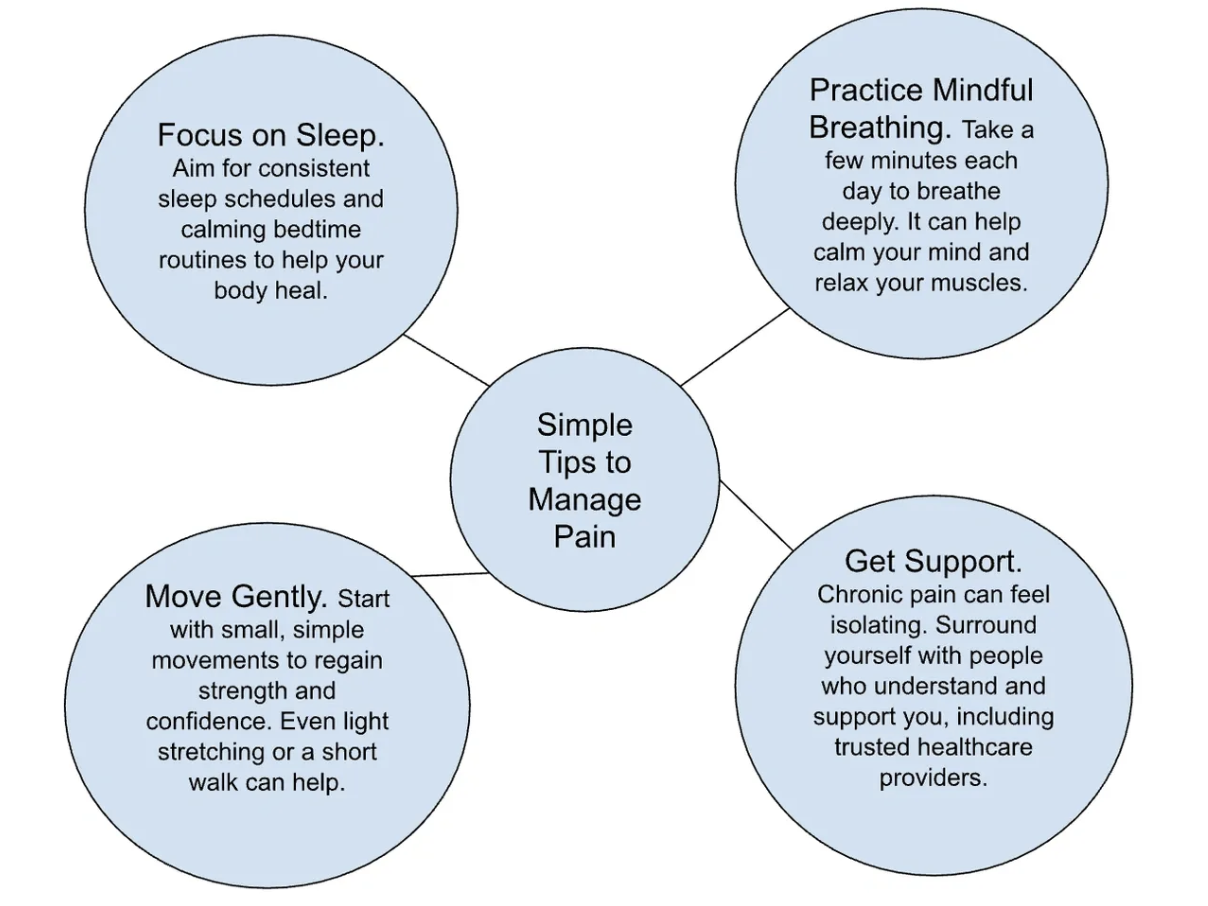How Pelvic Floor PT Helps with Chronic Pain Relief
Struggling with chronic pain? Learn how pelvic floor physical therapy at Boston Pelvic Physical Therapy in Melrose, MA, can help relieve pain, improve muscle function, and calm the nervous system.
Chronic pain is more than just discomfort…it’s a complicated experience shaped by your body, mind, and environment. Here at Boston Pelvic Physical Therapy in Melrose, MA, we work with people of all different ages and backgrounds who feel stuck in a cycle of pain. The good news? With the right approach, long lasting pain relief is possible.
Here’s a simple guide to understanding chronic pain and how pelvic floor physical therapy can help.
What Is Pain?
Pain isn’t just about injuries or damaged tissues. It’s your brain’s way of interpreting signals from your body, emotions, and past experiences. This means pain is real, even if there’s no visible injury.
There are two main types of pain you might experience:
Nociceptive Pain: This happens when there’s actual tissue damage, like an ankle sprain or a cut on your finger. Usually, the body heals within three months. If pain lasts longer, it might mean your muscles are tight, weak, or overprotective.
Nociplastic Pain: This occurs when the nervous system becomes extra sensitive and sends pain signals even when there’s no tissue damage or current injury. Think of it like a smoke alarm going off just because you burned toast. The alarm feels urgent, but there’s no real danger. It’s our body’s way of trying to protect us but it can go into overdrive. You can also watch Dr. Alex explain the “burnt toast” analogy here when it comes to managing chronic pain
What Can Make Pain Worse?
Pain isn’t just physical. It’s deeply connected to what’s happening in your life and environment.
Stress and Emotions: Stress can make your body more sensitive to pain. For example, feeling anxious or overwhelmed may release stress hormones that heighten discomfort.
Social Support: Pain often feels worse when you’re isolated. A lack of support from family or friends can make managing chronic pain even harder.
Lack of Sleep: Getting a good amount of quality sleep can help to quiet a louder nervous system, thus reducing chronic pain.
Chronic Pain and Related Health Conditions
Chronic pain often overlaps with other diagnoses. Here are a few examples:
Fibromyalgia: Widespread pain, fatigue, and trouble sleeping.
Irritable Bowel Syndrome (IBS): Digestive issues like cramping, bloating, and pelvic pain that stress can worsen.
Endometriosis: Pain from tissue growing outside the uterus, which may also involve nerve sensitivity.
Interstitial Cystitis (IC): Chronic bladder pain, pressure, and pelvic discomfort, often mistaken for UTIs. Pelvic floor PT helps relax tight muscles and retrain the bladder to reduce symptoms.
Pudendal Neuralgia: Burning, stabbing, or aching pain in the genitals, rectum, or perineum caused by irritation of the pudendal nerve. Pelvic floor PT eases nerve tension and calms the nervous system.
Migraines: Severe headaches linked to stress, posture, or tension in the neck, jaw, and pelvis. Pelvic floor PT improves alignment and releases muscle tension to reduce triggers (did you ever consider seeing a pelvic floor PT for migraines if nothing else has worked??)
What to Expect at Pelvic Floor PT:
Pelvic floor physical therapy helps with both physical and nervous system-related pain. Here’s how:
Relax Muscles: Gentle stretches and hands-on myofascial and manual therapy techniques ease tight or overactive muscles and improve blood flow.
Build Strength: Targeted exercises help weak muscles support your body better.
Calm Your Nervous System: Vagus nerve work, mindfulness techniques and breathing exercises to reduce pain sensitivity. Follow along with Dr. Alex as she demonstrates diaphragmatic breathing here.
Educate and Empower: We’ll explore the root of your pain and develop practical strategies to help you manage it.
Take the Next Step
There isn’t one single cure for chronic pain—it often takes a multi-disciplinary approach since there are many different causes and factors involved. The above steps above can help with pain management, but working with a team of professionals who understand and respect your unique needs is the best way to create an effective treatment plan.
You don’t have to live with pain forever. At Boston Pelvic Physical Therapy, we’re here to help you find relief and get back to doing the things you love. We are an inclusive, trauma-informed clinic and provide pelvic floor PT for men, women, people of all different gender-identities. Contact us today to learn more or schedule a consultation: info@bostonpelvicpt.com or (813) 540-0639.
References
Moseley, G. L., & Butler, D. S. (2015). Explain Pain (2nd ed.). Noigroup Publications.
Smith, A. K., & Anisman, H. (2015). Chronic pain and stress: The role of psychoneuroimmunology. Psychoneuroendocrinology, 62, 124–133. [doi:10.1016/j.psyneuen.2015.08.016]
Vowles, K. E., McCracken, L. M., & Eccleston, C. (2014). Acceptance and values-based action in chronic pain: A preliminary study of a novel intervention. Journal of Pain, 15(6), 625-635. [doi:10.1016/j.jpain.2014.02.003]
Cummings, T. M., & Galli, M. (2020). Mindfulness and acceptance-based therapies for chronic pain. International Journal of Behavioral Medicine, 27(5), 481-490. [doi:10.1007/s12529-020-09804-w]
Edwards, R. R., & Cahalan, C. (2011). Sleep disturbance, chronic pain, and depression. Journal of Pain, 12(9), 859-869. [doi:10.1016/j.jpain.2011.04.004]
Timmers, Inge et al. “The interaction between stress and chronic pain through the lens of threat learning.” Neuroscience and biobehavioral reviews vol. 107 (2019): 641-655. doi:10.1016/j.neubiorev.2019.10.007

